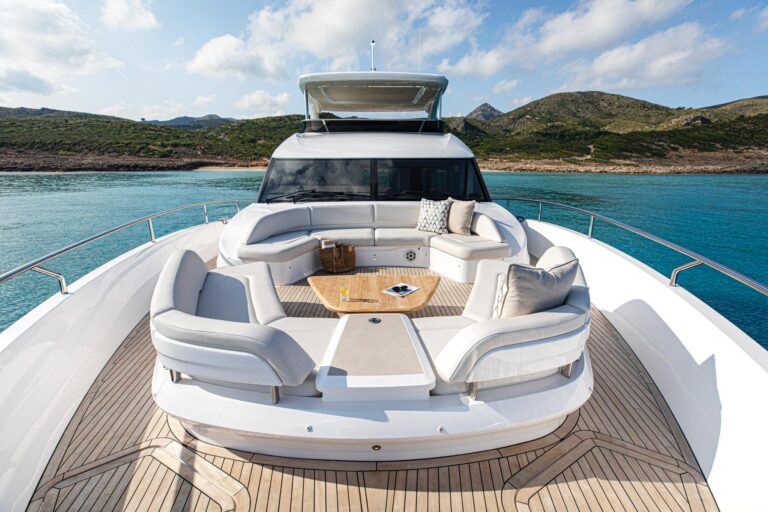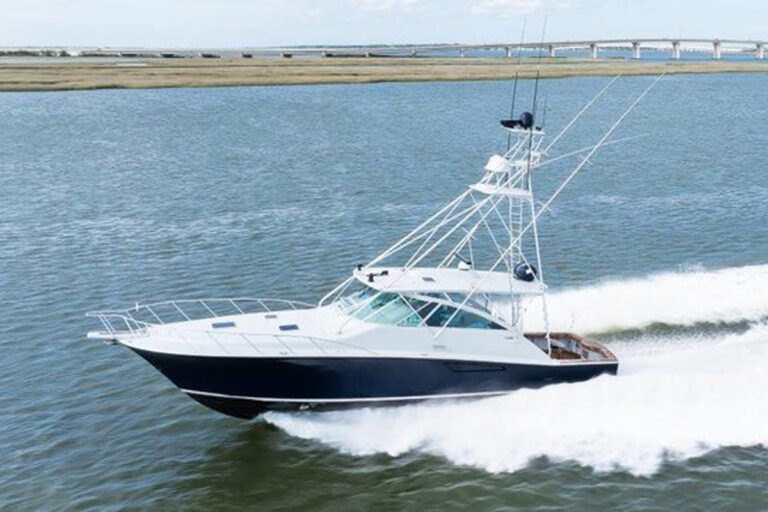Si-Tex has been among the leaders of an electronics industry trend toward multifunction display systems, based on the ubiquitous PC. Its latest offering, the Genesis System, controls and integrates information from as many as five data sources: chart plotter, radar, fishfinder/depth sounder, weatherfax and TV, entertainment or on board video. A moderately fast computer controls all the functions, positioning the Genesis somewhere between the limited capability of single-purpose chart plotters and Si-Tex’s totally programmable computer-based systems, such as the Radar PC (Field Test, September 2000).
The Genesis System’s focal point is a 10.4-inch (diagonal) active matrix color LCD. Though we did not use the system during a sea trial, we evaluated the screen’s visual quality under full tropical sunlight. The Genesis System’s LCD is rated at 300 nits, about one-fifth to one-quarter the rating of displays considered fully sunlight readable. (A nit is a lumen per square meter per steradian. Put simply, nits create the sensation of brightness. For full direct sunlight readability, a display should provide 1,300 to 1,400 nits.)
The Genesis’ information display is reasonably visible, except in direct sunlight or at an angle that directly reflects the sun. (That’s a barometer for all displays, including those rated fully sunlight readable.) The contrast is generally sufficient for clear viewing of all digital data, but information on the chart plotter screen is a bit more difficult to see and requires judicious shading. Overall, Si-Tex achieved a reasonable trade-off between cost and readability.
All the Genesis controls, except the power switch, are on the handheld control module that commands the system via an infrared communication link or a slim control cable. Control keys can be lighted for nighttime use when the remote is plugged into the system. The cable connection also is necessary when direct sunlight blinds the infrared receiver port in the display.
The control module is well designed. A 12-button, multifunction keypad occupies the lower portion. The Clear and Enter buttons are at the bottom corners, where they can readily be identified by touch alone. A nine-button dedicated function key group at the upper end of the remote lets you select operating modes and functions. The cursor control in the module’s center uses eight arrow keys, which is different from the more familiar single large button. We saw no advantage or disadvantage in the configuration.
The well-organized display has seven options for the main area: chart plotter, depth sounder/fishfinder, radar, video, weatherfax, plotter/sounder split screen and radar/sounder split screen. You also may overlay radar information on the chart plotter presentation. Video input from a TV station, onboard camera or other source can be shown on the main screen or the partial screen at the lower left of the display.
There are five vertically stacked data areas on the screen’s left quarter. The two uppermost sections show information from the GPS or DGPS and navigation information associated with the waypoint or route navigation mode. The third area provides plotter setting information or your cursor’s chart position. The fourth area can display a compass card or video information, and the fifth shows digital depth and water temperature. It’s a lot to see, but easy to digest thanks to the logical layout and clear graphics.
The system’s chart plotter mode operates conventionally, using cartography from one or two plug-in C-MAP NT cartridges. Full-scale display choices range from one-eighth of a mile to 4,000 nm. The system’s reasonably fast processor provides sufficient track memory for storage of 10,000 points on each of five tracks. Track recording intervals range from one second to 60 minutes, and from 0.01 nm to five nm. Waypoint storage is equally impressive: 1,000 waypoints stored in five groups of 200 each. Route storage allows for as many as 50 routes, each with as many as 20 waypoints. Screen redraw is fast. Typical of C-MAP systems, access to specific data about navigational aids requires a number of inputs to select the appropriate dialog box and access the information. This is apparently the price you have to pay for keeping the basic information display clear and uncluttered.
You may connect a Si-Tex GPS or DGPS to the Genesis, but not receivers from other companies. The system doesn’t recognize NMEA 0183 or the new 2000 protocol. The GPS plugs into a dedicated socket (one of 11 connectors) in the display unit’s rear and offers all the typical GPS functions.
The Genesis can operate with the Si-Tex Radar PC, serving admirably as the display for all radar data. PC radar are in the works that use larger, more capable radar antennas and somewhat higher-power magnetrons.
A fishfinder/sounder circuit board also can be installed within the Genesis unit, permitting connection to a dual-frequency ultrasonic/water temperature transducer. The sonar’s output power is 600 watts RMS. The fishfinder functions parallel those of the Si-Tex Pro-Fish II (Field Test, June 2000).
Although the Genesis processes and displays weatherfax data from a single sideband radio, it has no provision for storing reception frequencies or times, so all control of fax reception is manual. The system will store a maximum of five weatherfax images, but reception of weatherfax via SSB is a seemingly endless process during which the system cannot be used for other purposes.
Entertainment functions the Genesis supports are a TV signal from on board cameras, commercial TV and FM broadcast audio. TV images can occupy the full screen or may be shown in the partial-screen area at the main screen’s lower left. The full-screen on board TV capability can be of real value as a rear-view aid during docking. Showing the view aft on the partial screen, with chart and radar information on the main screen, can be useful when keeping track of overtaking traffic.
The Genesis system’s suggested base price is about $3,300. A fully expanded system is less than $7,000, but keep in mind it interfaces only with Si-Tex products.
Contact: Si-Tex, (727) 576-5734; www.si-tex.com.









